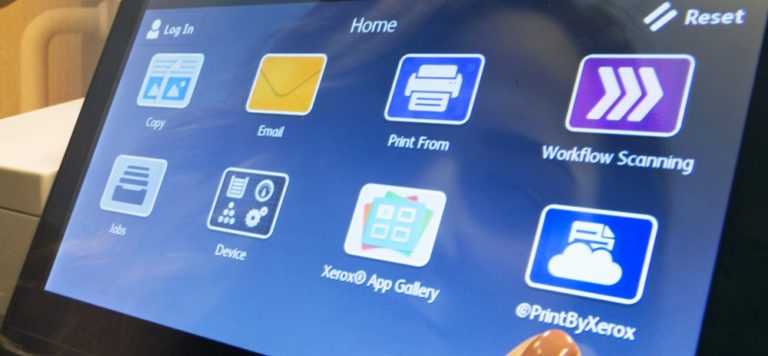By Sachin Shenolikar

(This article was first published in Real Business on July 7, 2014. Real Business is a website from Xerox that provides ideas and information for decision-makers in business and government.)
On a recent Saturday afternoon, a Brooklyn man was experiencing trouble with his home Internet service. After a couple of futile attempts to reboot the system, he called the service provider’s help line. A series of short vocal prompts led to a friendly voice that asked what the issue was. When the caller replied that his Internet wasn’t working, the agent reported that there were no outages in the area but would try to resolve the problem by sending a signal boost to the modem.
The customer was instructed to hang up and call back in 10 minutes if the problem persisted.
There was no need to call again. The agent’s action worked, and the caller was pleased to have his issue resolved with minimal explanation and no time on hold.
Virtual Agents Have Become More Social
Now here’s the thing: That friendly voice on the other end of the line wasn’t a person. It was an intelligent virtual agent (IVA). Apple’s Siri is the most famous of these computerized helpers, but more and more businesses are using their own IVAs to deal with customers, both via phone and live text chat. The technology consulting firm Gartner forecasted that, by next year, 50 percent of customer service interactions will be conducted with IVAs.
The trend makes sense, as there are several benefits to using virtual agents. Hold times are cut and assistance can be provided 24/7 for almost no additional cost to a company. Still, that convenience wouldn’t matter if a customer was left frustrated after an unproductive call.
That’s the area where virtual agents have taken big steps. IVAs can take a description of symptoms and provide an accurate solution that is based on rapid analysis of company documents and prior interactions with other customers.
And, in a world where social media is king, virtual agents have also gotten more social.
Eye-Popping Accuracy
Virtual agents now understand and respond to conversational language. For example, if a customer describes that his smartphone is too hot to touch, the IVA can deduce that the phone is overheating and then provide a solution based on millions of customer-agent interactions that have been filed in its system, combined with a customer profile.
“It’s a customized process,” says Tim Deluca-Smith, vice president of marketing at WDS, A Xerox Company. “It’s the ability of the virtual agent to actually understand everything that is going through that system and to learn from it.
“It’s actually saying, given the context [of the customer issue], given the subscription he is on, given what he is trying to do, given who he is, given having seen this question asked historically, that it can provide the solution for a customer with a 99 percent degree of certainty.”
That accuracy stat is eye-popping, but the conversational element is just as important. Customers have often complained that interactions with virtual agents are stiff and awkward, and require explaining issues multiple times until the computer finally understands. That has changed. Make no mistake — you won’t be having witty banter with a virtual agent, as if you were on a late-night talk show (well, that could be coming soon, too). But machines are now able to comprehend what customers are telling them based on a description of the symptoms — not solely a list of keywords.
The Role for Humans
So, as machines become more human-like, it brings up a burning question: Will computers take these customer service jobs away from people? “These things will not disappear overnight,” says Deluca-Smith. “But they will change.”
In the future, the human role will focus more on maintenance of virtual agent systems and figuring out ways to further their development. And, skills will need to be developed to improve problem areas in companies and taking action on consumer habits based on the data that the agents are compiling.
“Every time an agent resolves a customer problem, that’s another learned interaction,” says Deluca-Smith. “The machine remembers.”
For now, consumers can look forward to even faster, more accurate, stress-free service — which will continue to shift their perception of virtual agent customer service.
“I think we will get to a point that [customer] confidence is a lot higher,” says Deluca-Smith. “The consumer [will have] confidence that he can ask a question, in his language, the way he speaks, and get an accurate response. It will be at that point that people will start to understand and embrace the automated channels.”
(The WDS Virtual Agent was introduced on October 27, 2014. This intelligent, virtual customer care agent can understand, diagnose and solve customer queries in the same way a human agent would. This virtual agent draws on research from PARC, A Xerox Company, and the Xerox Research Centre Europe in Grenoble, France. More information is available in this news release from Xerox.)
Subscribe to Simplify Work and receive email updates when we publish a new article.





